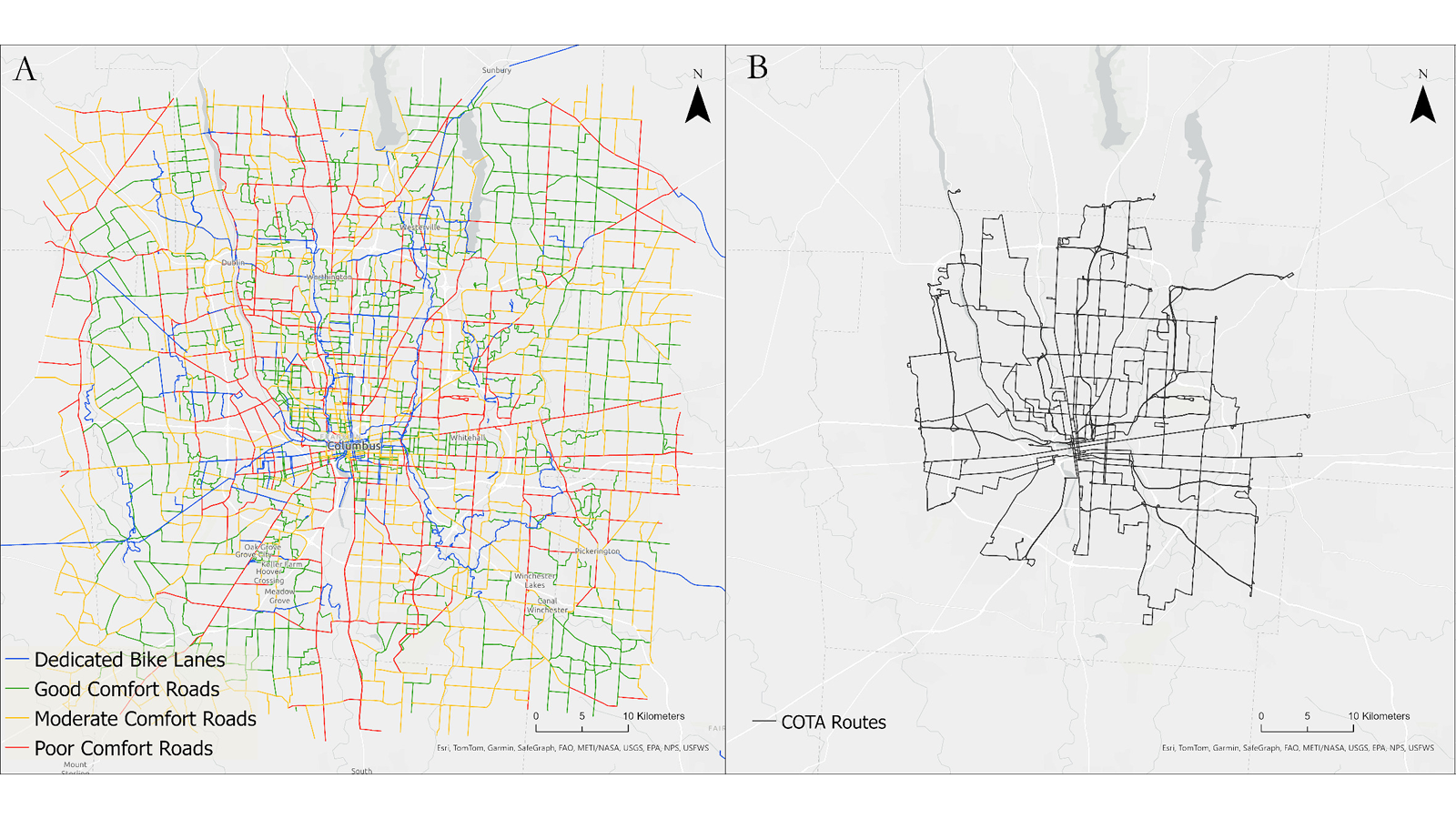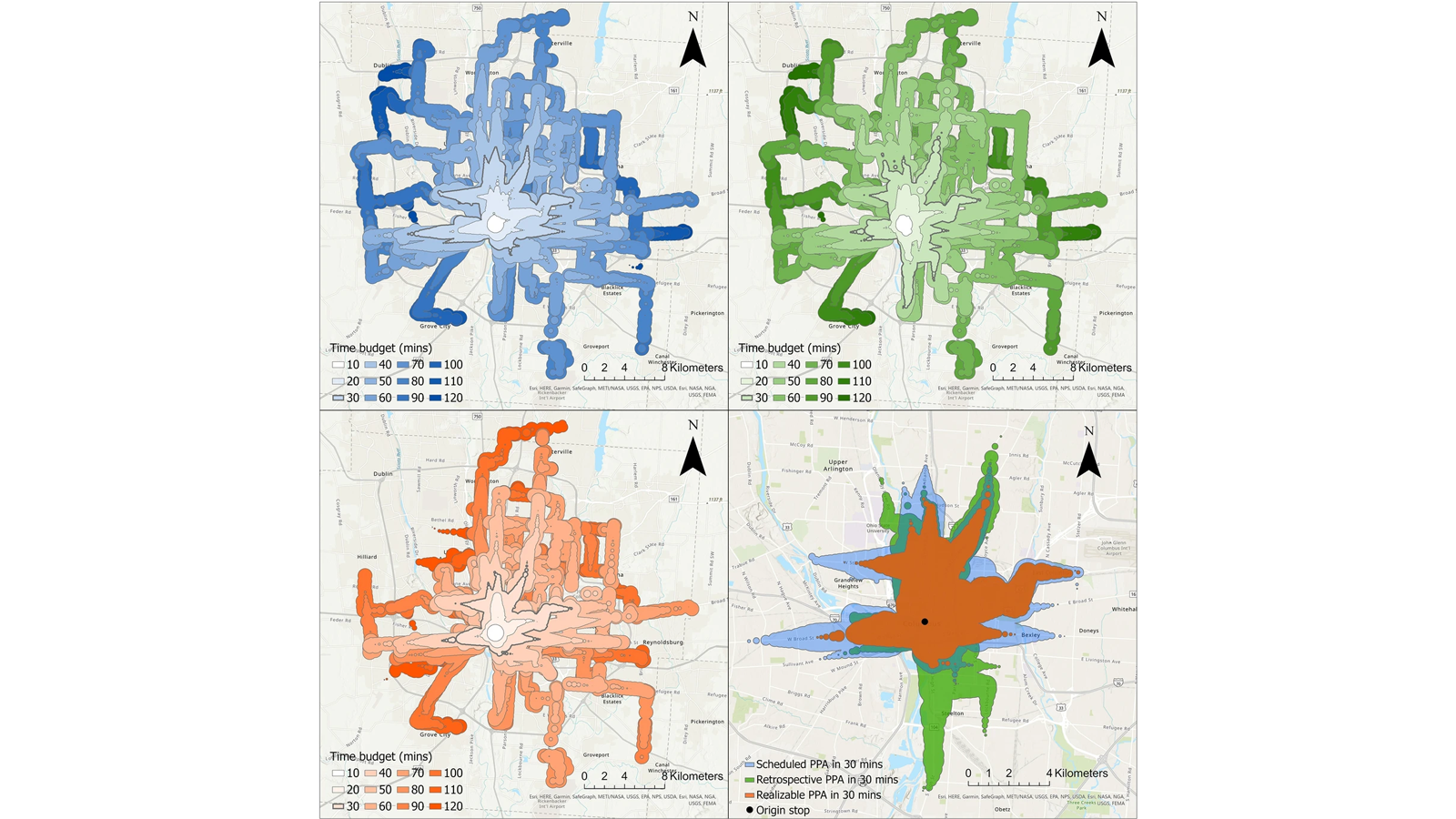CURA fulfills its mission by conducting research that promotes accessibility and social equity. Below are several recent projects that fall within this goal. Contact CURA for additional information about this work.
Disparities in Public Transit Accessibility and Usage by People with Mobility Disabilities
Despite the fact that many people with mobility disabilities rely on public transit, they face higher barriers to using services. By utilizing high-resolution public transit real-time vehicle data, passenger count data, and paratransit sage data from Columbus, OH, CURA researchers compared transit accessibility and usage of people with and without mobility disabilities. The study concluded that powered wheelchair users' accessible geographic areas are 25% of general ridership, and manual wheelchair users' accessible areas are just 1%. Additionally, the research found that these disparities were greater in the urban center and increased at the onset of the covid pandemic. Unlike previous studies, the work focused on accessibility within the broader built environment and infrastructure rather than on transit facilities.
Evaluating Bike-Transit Integration
Through high-resolution transit data, CURA studied bike-transit multimodal accessibility and usage patterns through a social equity lens. The research found that bike-transit integration brought benefits to both public transit riders and cyclists by expanding their accessible opportunities by up to 70%. Other findings include significant disparities in bike-transit activities for Black communities due to inadequate biking infrastructure, and better infrastructure significantly improving multimodal accessibility. Taken together, the work provides useful information for transit planning in Columbus and beyond.
Evaluating Public Transit Accessibility
CURA researchers developed realizable real-time accessibility, a new way to measure transit accessibility based on space-time prisms. The team conducted a case study using high-resolution General Transit Feed Specification real-time data from the Central Ohio Transit Authority (COTA) and found that this new measure was more practical, conservative, and robust than traditional accessibility measures which overestimate accessibility. The research offers a new way for transit authorities to guide their planning by focusing on an individual user's perspective rather than the system as a whole.
BARI-Hoods Project
Headed by CURA Faculty Affiliate, Keeley Pratt, the BARI-hoods project explored disparities in social determinants of health and weight loss among patients following bariatric surgery in Franklin County. The research found that close proximity to food stores is associated with better weight loss two years after bariatric surgery. Additionally, living in areas with lower poverty levels did not negatively affect weight loss for Black patients. Bari-Hoods provides new information on postoperative outcomes and the built environment and identifies the need for additional research.
Citations
Liu, L., Kar, A., Tokey, A. I., Le, H. T. K., & Miller, H. J. (2023). Disparities in public transit accessibility and usage by people with mobility disabilities: An evaluation using high-resolution transit data. Journal of Transport Geography, 109, 103589. https://doi.org/10.1016/j.jtrangeo.2023.103589
Liu L., Lee J., & Miller, H. (2024). Evaluating accessibility benefits and ridership of bike-transit integration through a social equity lens. Computers, Environment and Urban Systems, Volume 112, 2024. https://doi.org/10.1016/j.compenvurbsys.2024.102150.
Liu, L., Porr, A. and Miller, H.J. (2023) “Realizable accessibility: Evaluating the reliability of public transit accessibility using high-resolution real-time data,” Journal of Geographical Systems, 25, 429-451.
Pratt, K. J., Hanks, A. S., Miller, H. J., Outrich, M., Breslin, L., Blalock, J., Noria, S., Brethauer, S., Needleman, B., & Focht, B. (n.d.). The BARI-hoods Project: Neighborhood social determinants of health and postoperative weight loss using integrated EHR, Census, and county data. Surgery for Obesity and Related Diseases. https://doi.org/10.1016/j.soard.2022.12.03



